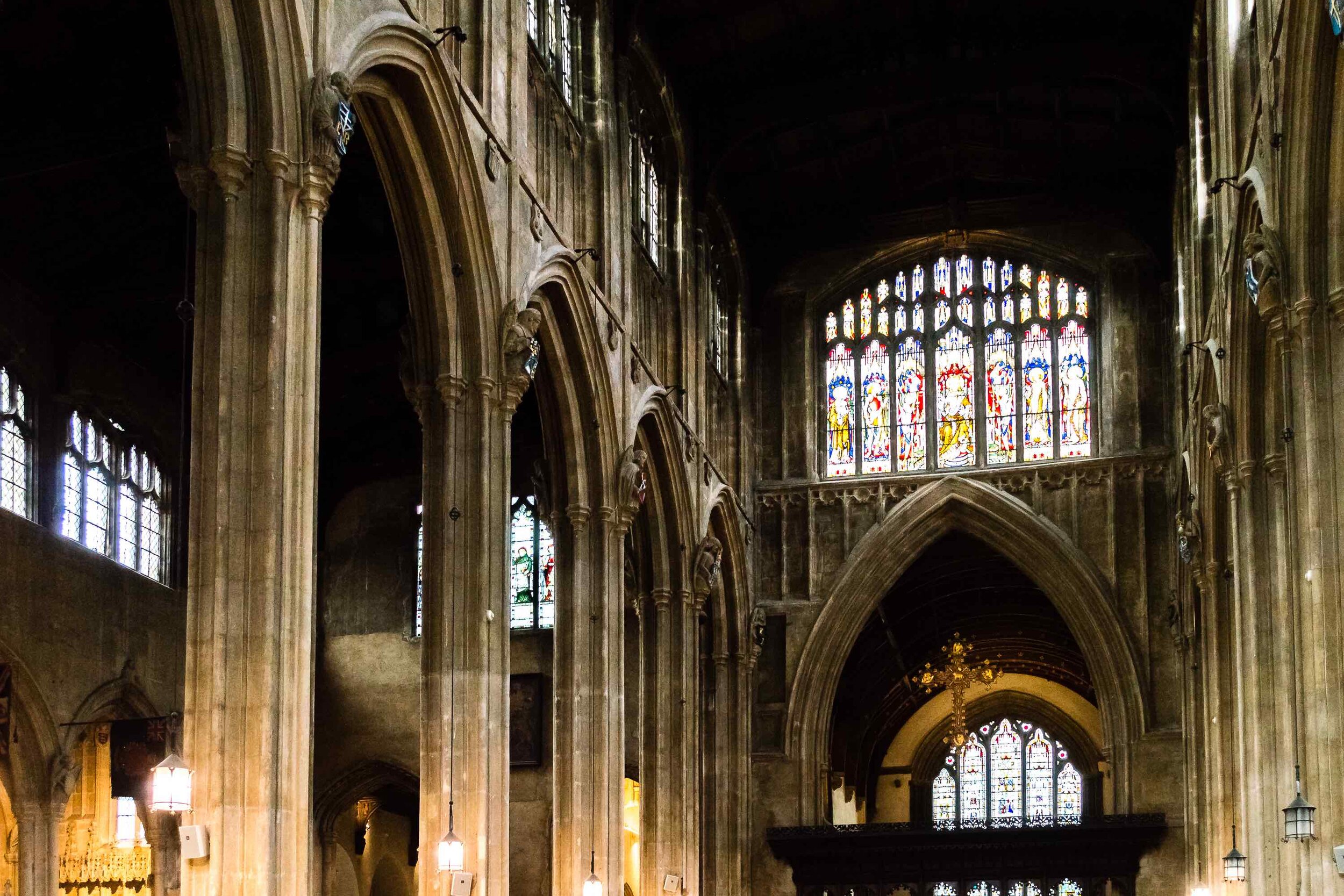Saint Kenelm (or Cynehelm) was an Anglo-Saxon saint, venerated throughout medieval England, and mentioned in the Canterbury Tales (in the Nun’s Priest’s Tale). William of Malmesbury, writing in the 12th century, recounted that “there was no place in England to which more pilgrims traveled than to Winchcombe on Kenelm’s feast day”. The church is built of stone faced in ashlar (dressed, regular stone) and comprises a chancel, central tower with spire, north and south transepts, and nave with a south porch. There is not much left of the earliest Norman church (stonework around the door leading from the north transept to the belfry staircase and around a small window on the staircase) – instead, what you see is a 13th-century chancel and 14th-century tower and spire. The nave and transepts were added soon after, with the north transept remodeled in the 16th century, presumably by the Poole family, whose mortuary chapel it became, and where you can see a really splendid memorial to Sir Henry Poole, together with his wife and children.
In the early 18th century the nave, south transept, and porch were almost completely rebuilt in classical style, possibly by the Atkyns family (wealthy local landowners, who included the eminent historian, Sir Robert Atkyns, author of the Ancient and Present State of Gloucestershire, whose magnificent memorial is here) and new windows inserted in the chancel. A gallery was placed above the porch and was used by the church orchestra in the late 19th century. A pair of 15th-century benches with linen-fold ornament, beyond the font, were original to the church but most of the other woodwork was apparently taken from the manor-house demolished in the mid-18th century and includes the odd but handsome Jacobean carved figures that decorate the pew-ends and the front of the gallery.
AND…
Charles Mason, one of the geographers who charted the Mason-Dixon line in America, was born at Sapperton where his wife, Rebekah, is buried. The line, established between 1763 and 1767, was an attempt by the Crown to resolve a border dispute between the then-British colonies of Pennsylvania and Maryland. Surveyed by Mason and Jeremiah Dixon, the line came to be thought of as the division between northern and southern USA (‘dixie’). An eminent astronomer, the Mason crater on the Moon is named after him.


0 Comments